Why We Made Tokie: A modern file manager
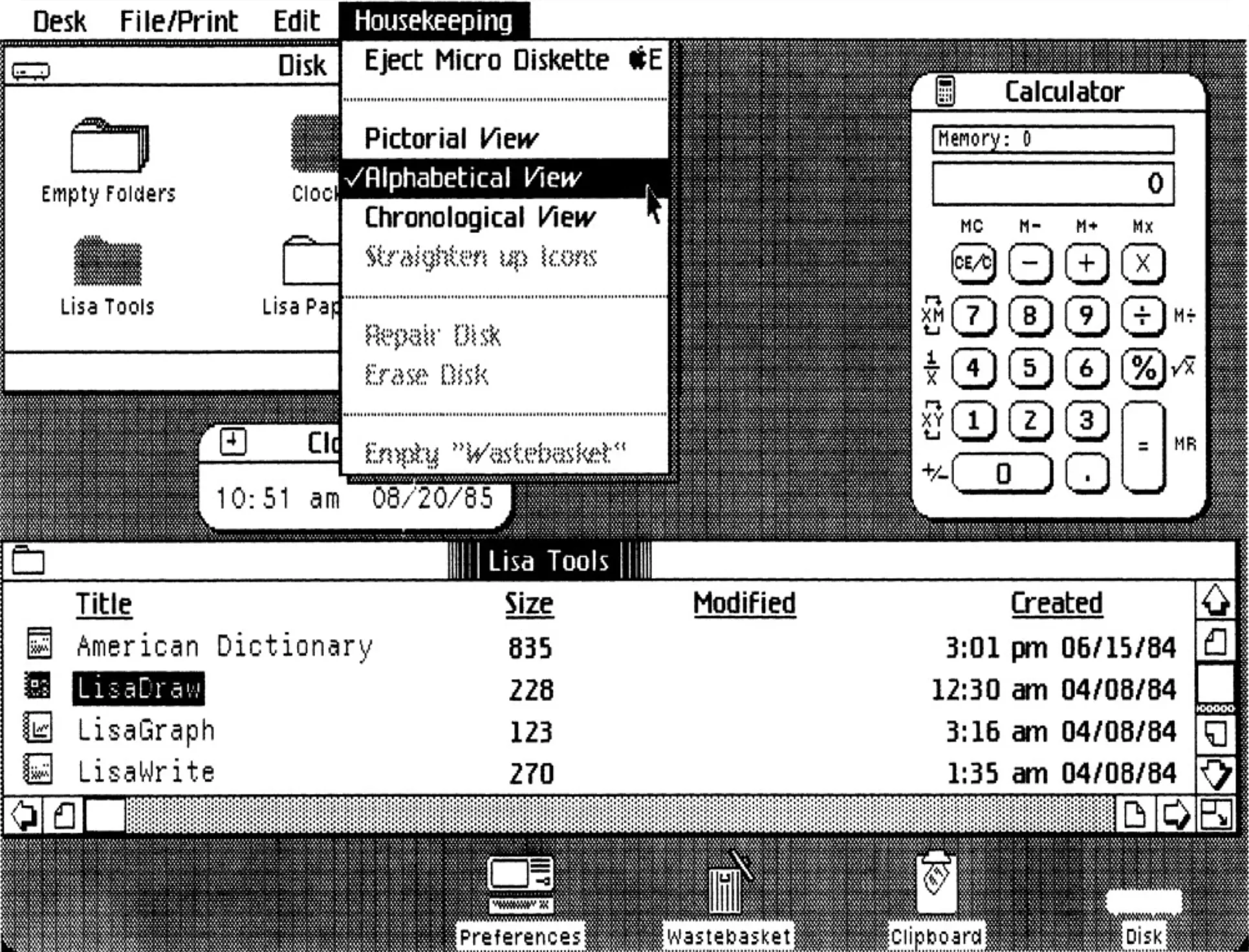
If you've clicked into this article, you're probably just as curious about everything as we are.
We imagined tokie as something quite unique--something we wish we had, but haven’t seen anywhere else on the market.
And it started by this random thought:
Folders really look like a database! But wait, are they?
Your folder is a lot like your bedroom
Obviously, this thought didn’t actually come up randomly, it was part of a discussion we had around the pain in managing local files.
It is inevitable that your desktop and folders are eventually becoming a lot like your bedroom.
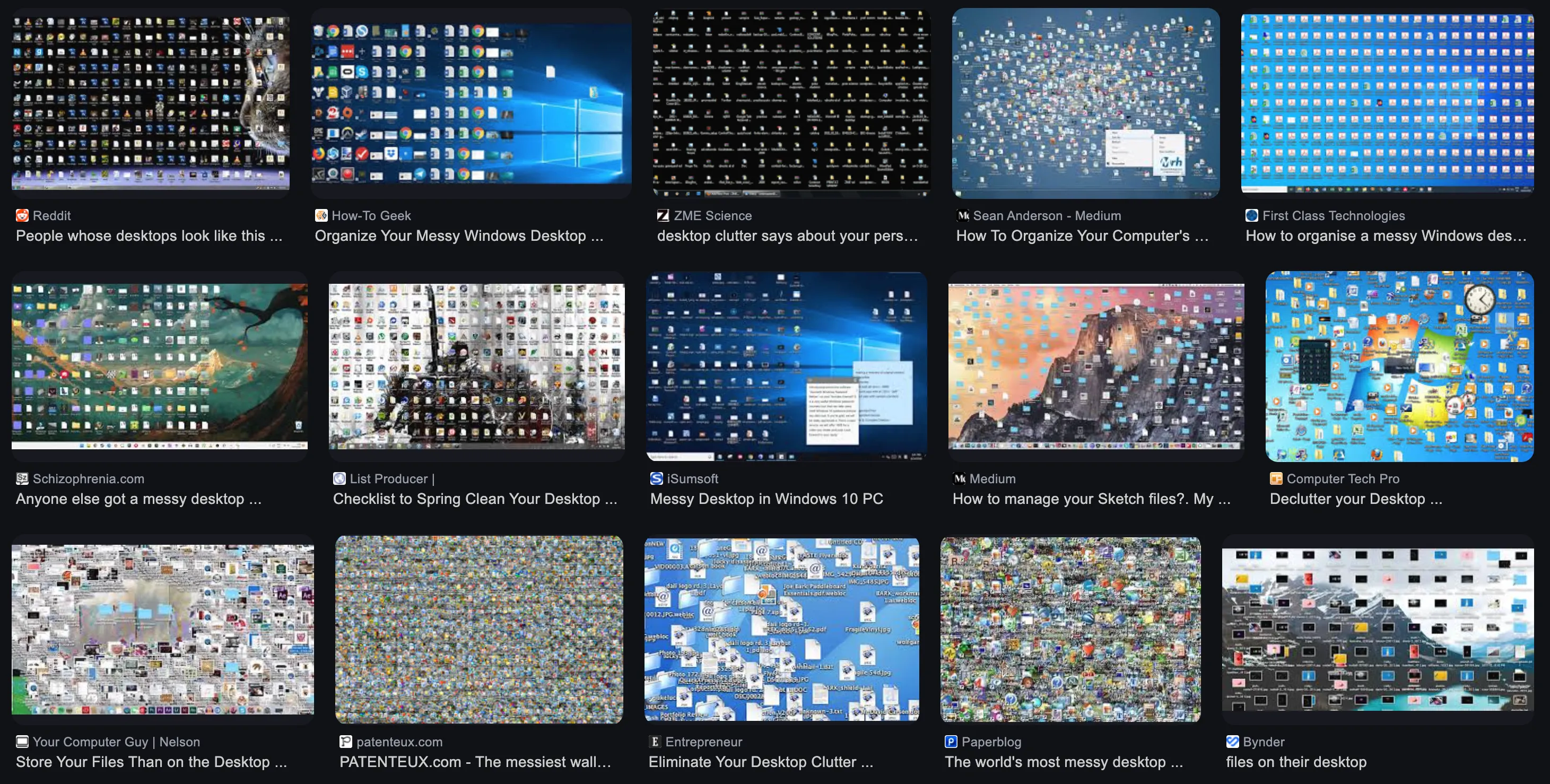
If a folder is a lot like a database, why didn’t it end up like one? To me a database is supposed to be the opposite of chaos, and is exactly what a folder becomes.
We can’t help but think, what is missing from a regular file manager that could give us more control to manage our file? It would be quite nice to actually manage a folder’s content like how you would do to your Notion’s database.
This is what made us start to think about this problem, but it is not the only question we had in mind.
Why do we need softwares?
That is as dumb as the previous question we had, but it also sits at the very core of what we did with tokie.
Why did we have to open a software to do some of the most basic stuff with a file, like opening the Excel app to just change some value in a cell, or open a notepad to just copy some information from a file. Eventually, you end up having 40 windows open on your Mac, and Apple had to design something like Stage Manager to handle it.
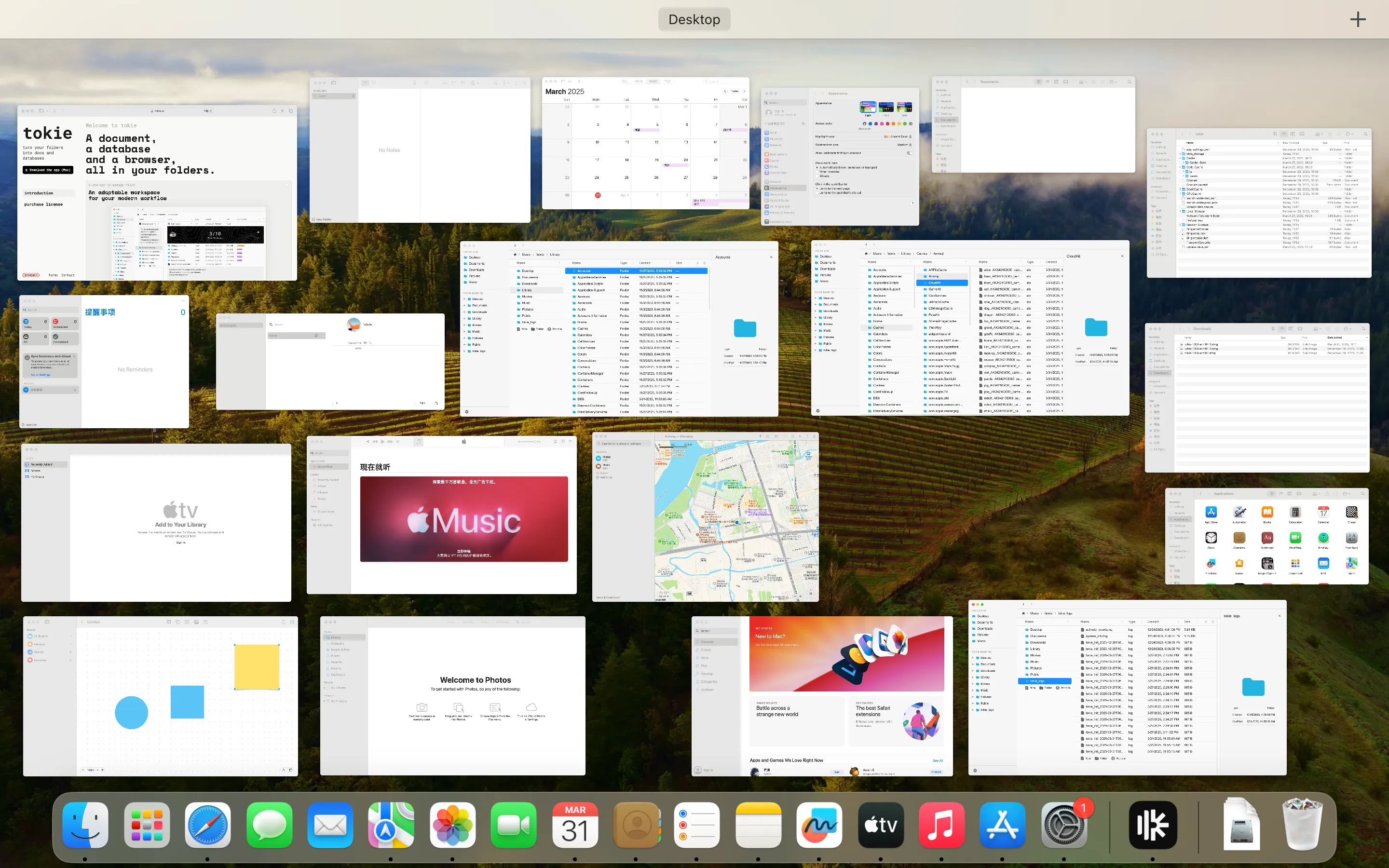
Obviously the world needs heavy duty softwares that are essentially editors of all kinds to edit in various formats. However, as technology evolves, we are witnessing softwares collapsing into features, and you end up with more powerful features and less softwares.
Does that mean, at some point, the features we use everyday can collapse into something that works without relying on a specific software?
Files and softwares, these two concepts are so deeply engraved into our mind, we don’t question them at all, but when you try to explain this to your grandma, you will see the issue.
We are not talking about some software armageddon, we are just saying that the desktop and folders could do more to make it easier.
Folders are digital antiques
You are still using the same folder design from 40 years ago.

It is the same structure, with almost the same features from the very first folder app that came out with the GUI.
The creator of the very first folder app must be very proud.
However, it wasn’t that timeless, otherwise you would probably not be labelling information in the file names.
The Finder Replacement That Turns Your Folders into Databases
We are not crazy to think that we can turn it upside down and design something completely different, it was really about designing something that we will feel useful today.
It seems that there is a lot going on in the online collaboration and productivity tools space, how we handle files online and with others have changed a lot. It makes it challenging for the local file manager on our computers to fit into modern workflow.
By redesign, we really were just trying to bridge the gap, and here are the things we did in our very first version.
1.Turning your list view into a database
This was obvious for us, we already have the file names, file types, size and dates as the fields, we really just needed to add custom fields to it, so that we can manage them in the same way we do in Notion and Airtable.
Before Notion and Airtable, database seems to be a concept that is very far from the end user, but for people serious about productivity, this concept is no longer unfamiliar. Teams and individuals have developed numerous workflows around these fundamental building blocks.
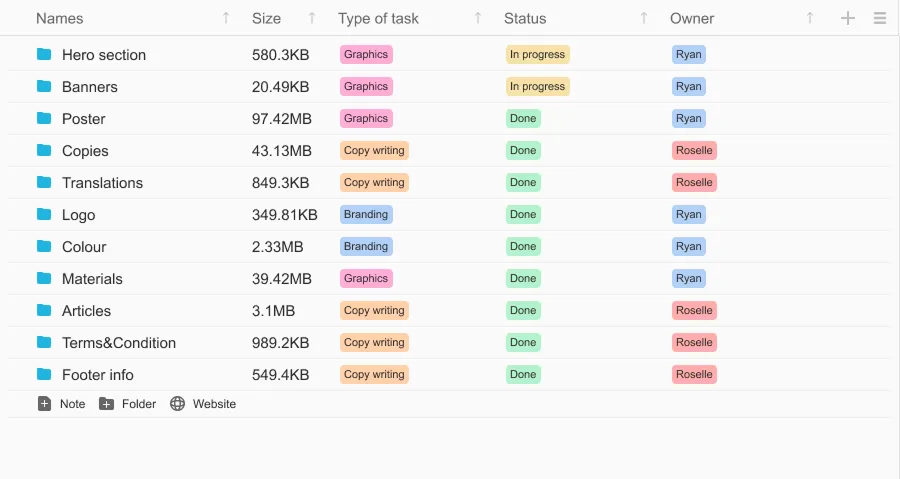
To test water, we’ve only added “Text”. “Number” and “Select(label)” for some basic labelling, but we will add more to it in the future iterations for sure.
2.Turning your folder into a customisable document
The not-so-obvious idea was to have some of the file open directly inside the folder, so that you don’t need to open a dedicated app for it.
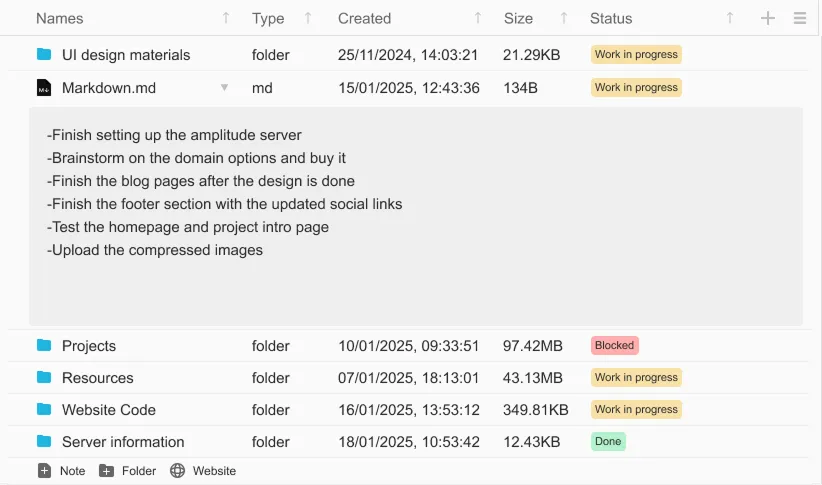
We call it inline display, currently we only supported markdown files and website links. With this version, you can view and edit markdown files directly in the folder, keep it expanded next time you open this folder.
By keeping notes right inside the folder, you don’t need to create a word document for a project folder just to write down some notes, this was a small difference, but it is currently our most heavily used feature.
3.Make good use of the side peek panel
In Finder, you can preview some of the files in the column view, but for PDF files, you can only view single pages, wouldn’t it be nice to view the entire PDF file by just scrolling up and down in the side peek panel? Or a saved website linke?
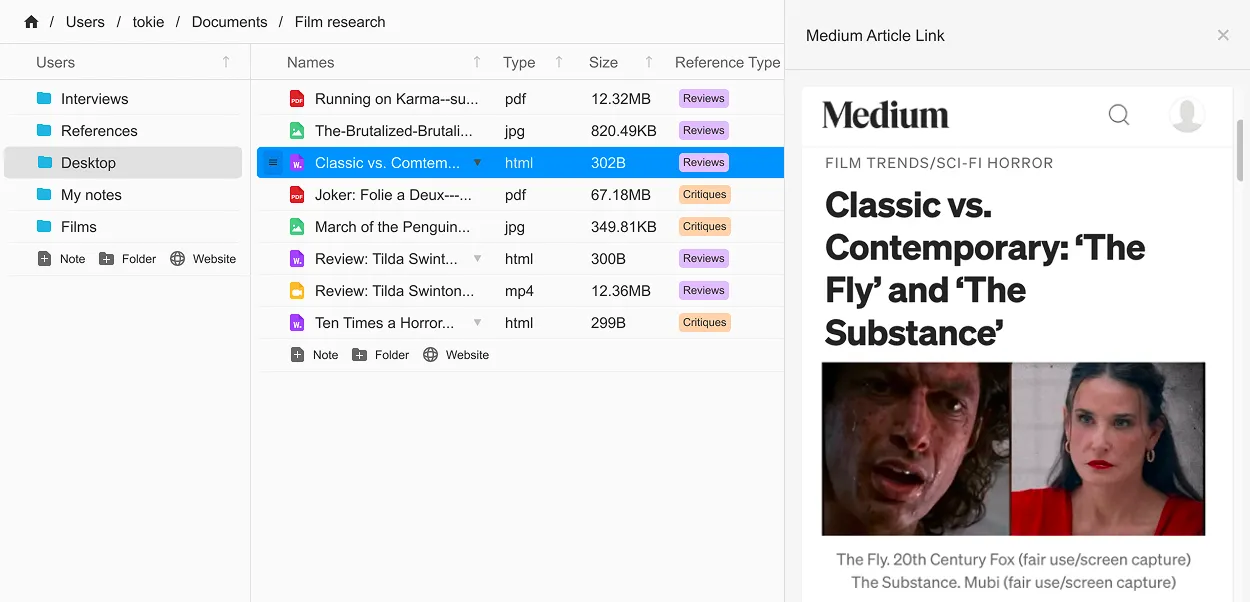
We will be adding more support to other file format, and eventually, we want to make it less necessary to use dedicated apps for those common files.
4.Your folder can also be a web browser
This was quite interesting, as no one we interviewed was actively asking for it, but everyone loved it when we presented the feature.
We saw people having so much pain storing website links in a Word document, and saving the document inside some project folder. You would expect the actual browser’s bookmark to do this, but it feels a lot more intuitive to save them in the actual project folder next to whatever it is related to.
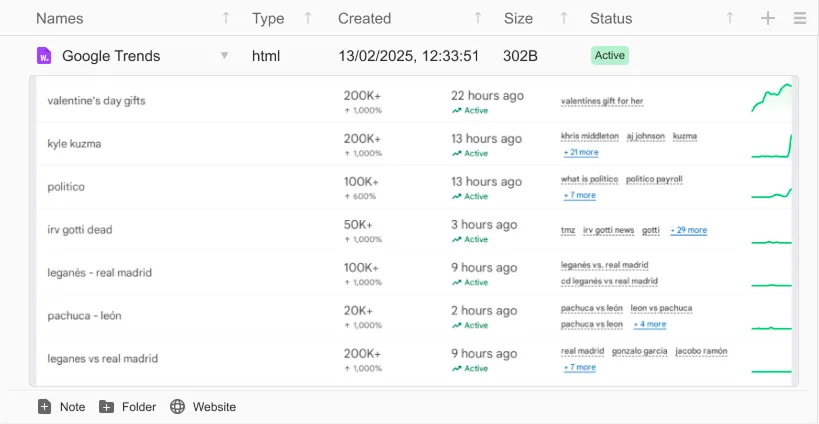
We added an “Add Website” button to the bottom of each folder, and you can bookmark any link which will be saved as a file, and you will be able to view this website link directly inside the folder(side peek or inline display).
There are also other features like having a tree view on the side panel for easier navigation, and merging list view and column view into one so that you don’t need to switch between them. Guess you will need to explore it yourself to experience how convenient and fun a file manager can be.
What does tokie mean
It is a cuter version of “Toku” in Japanese, meaning to unfold and to bring clarity to something.
We also like that the domain tokie.is is still available :P.
Getting started with tokie
We believe that the very first version of tokie can allow you to experience the future of file management firsthand.
If you made it this far in this article, you are likely the type of person who has your own opinions on your own tools, please share that with us after you try out tokie (email us at hello@tokie.is).
Now go to the bottom of the page, download the app, and enjoy yourself.
Ready to try Tokie?
Transform your file management experience with Tokie's powerful features.